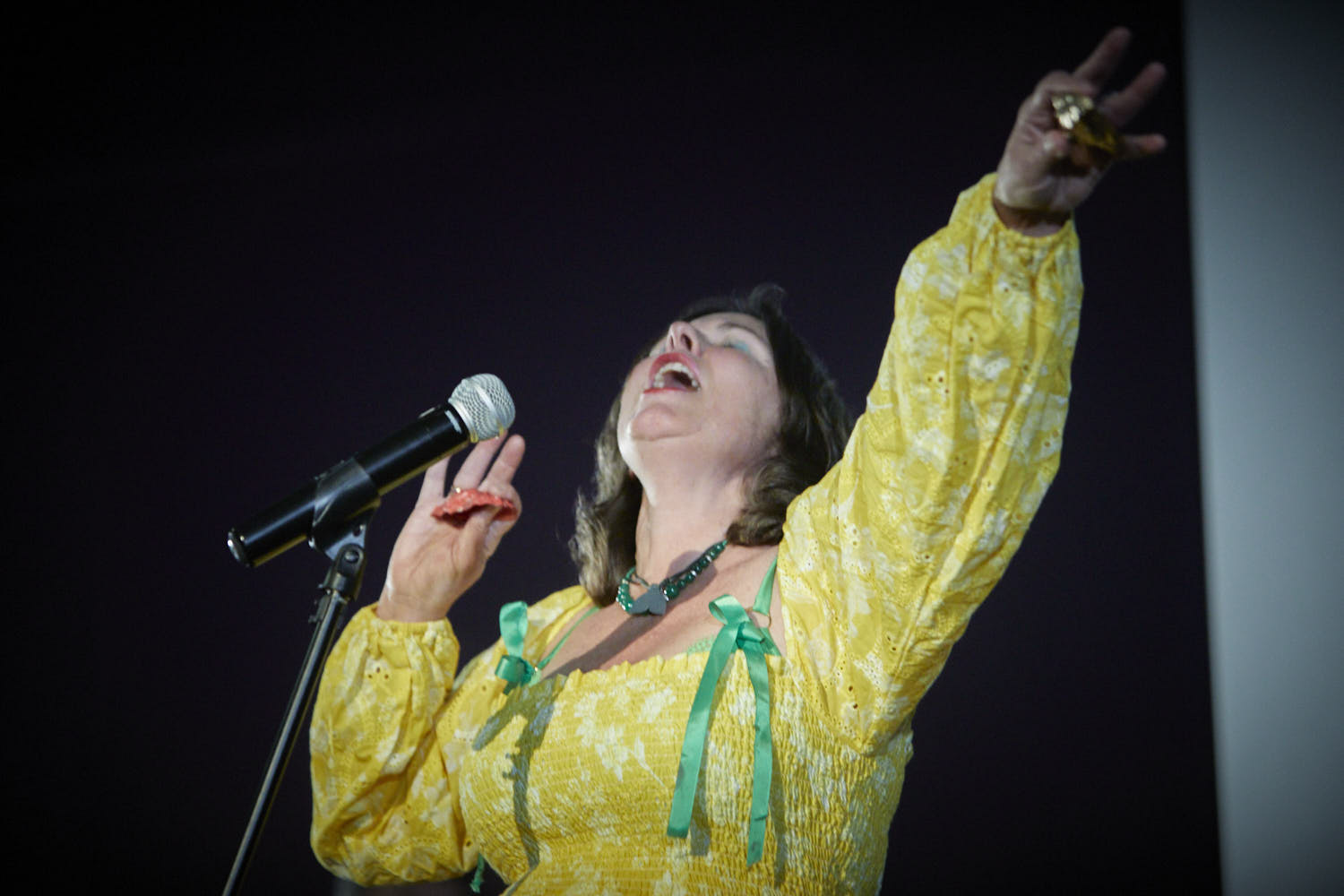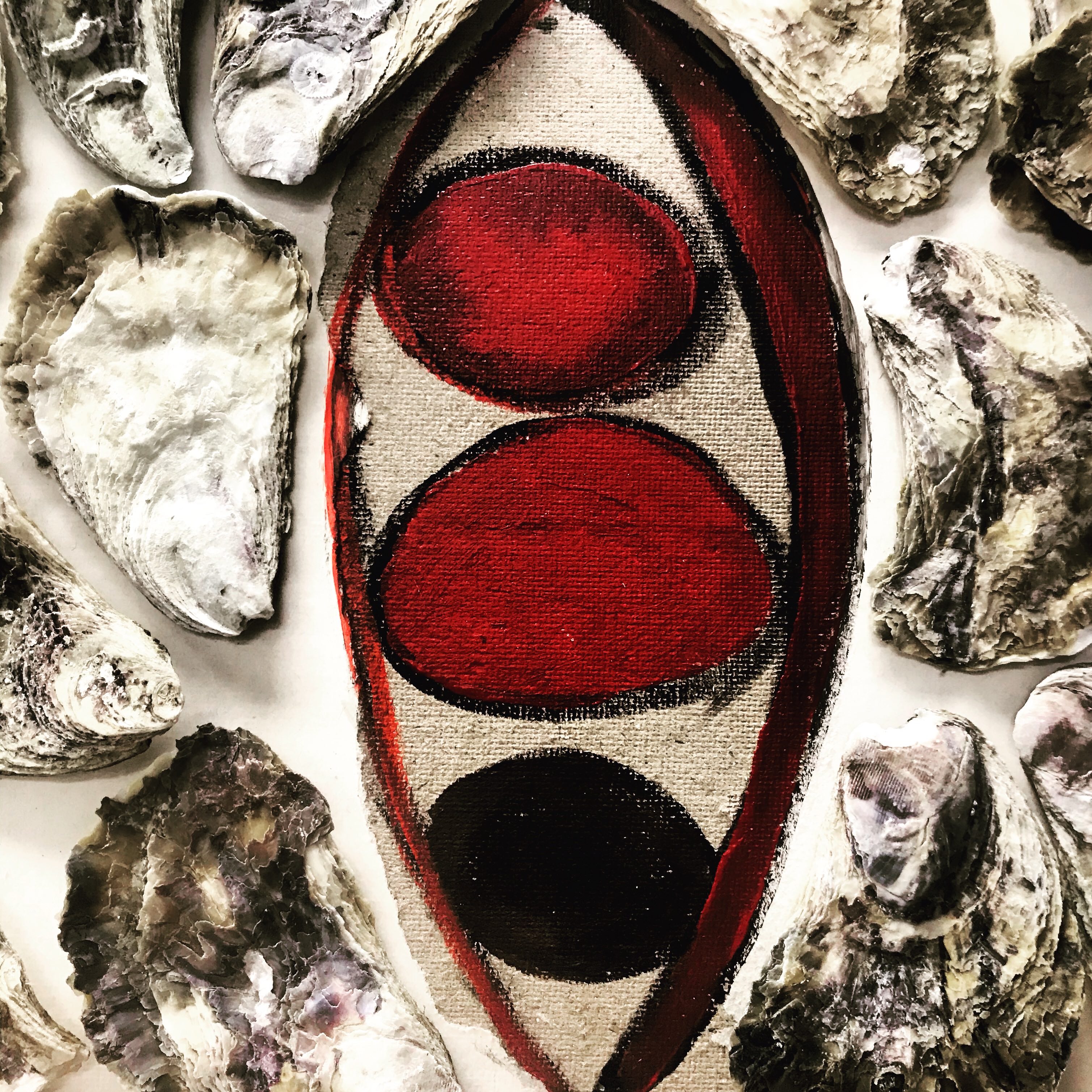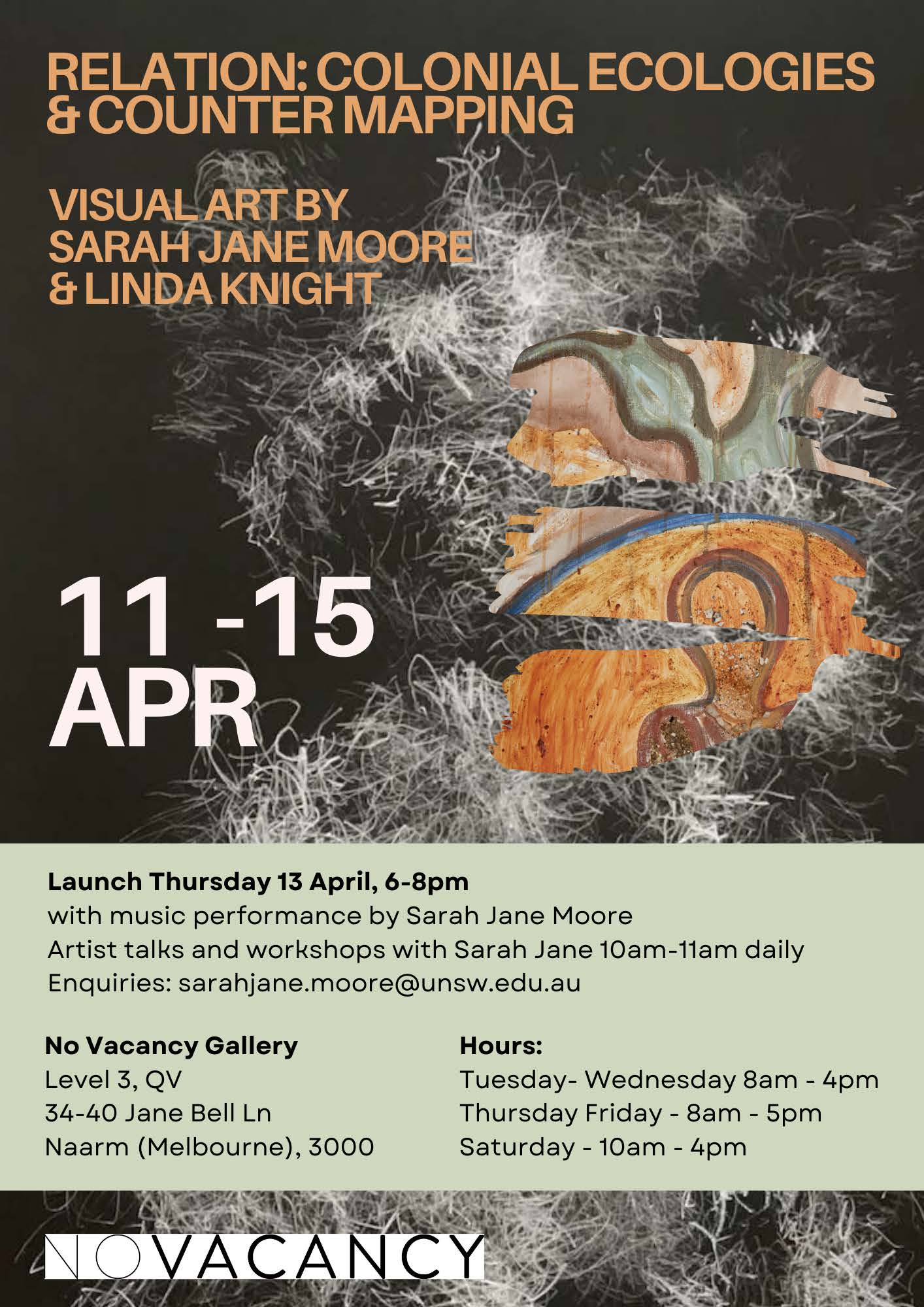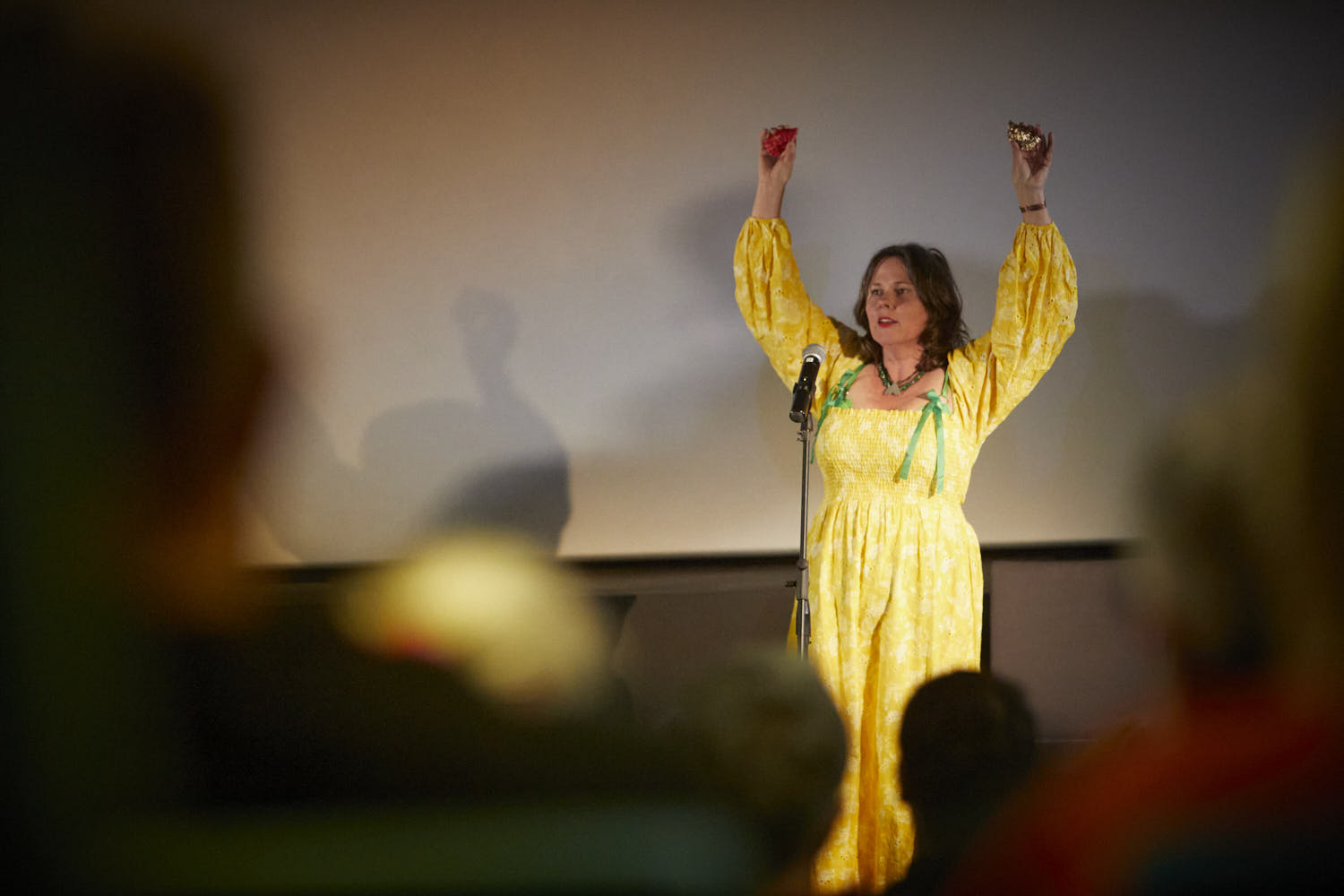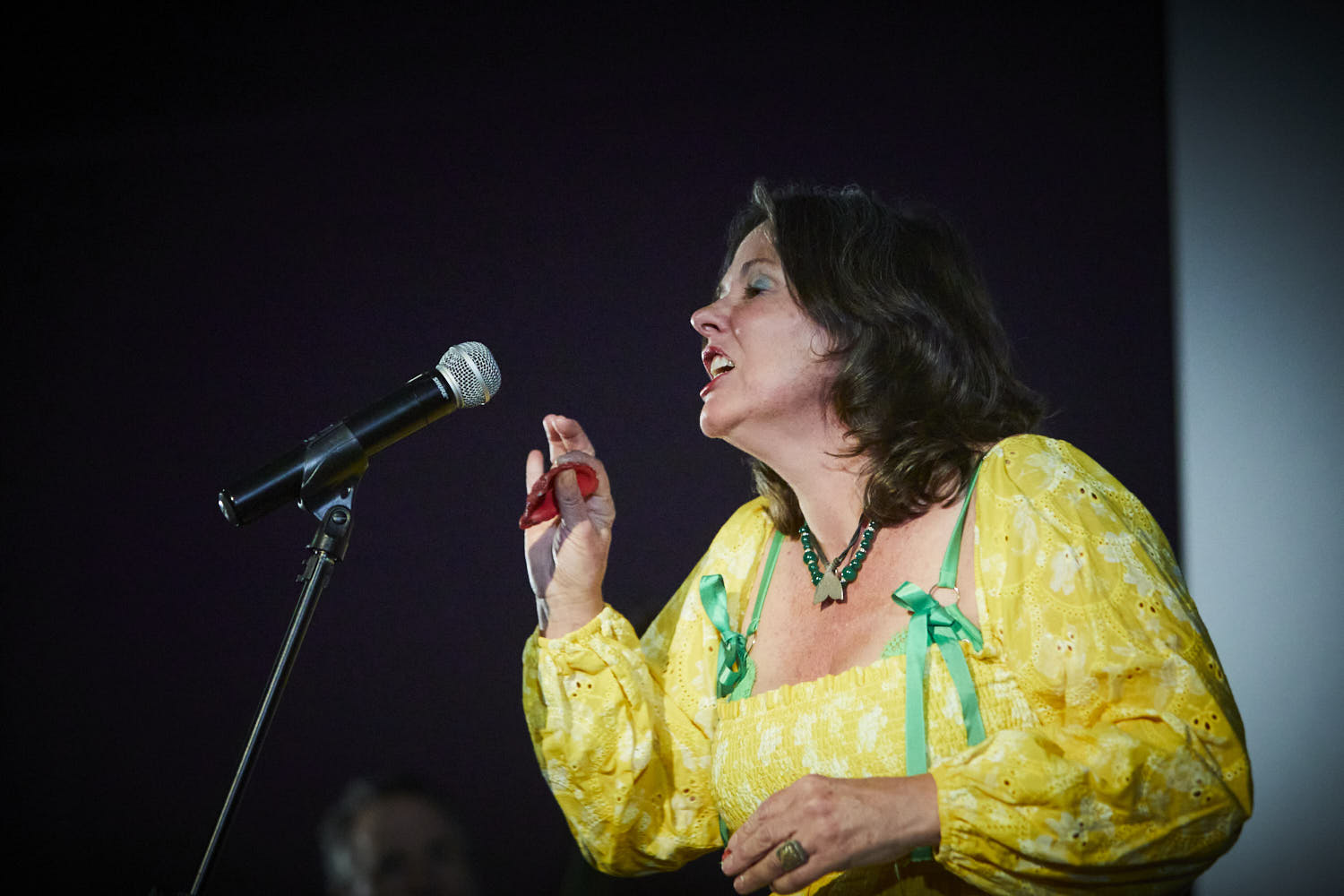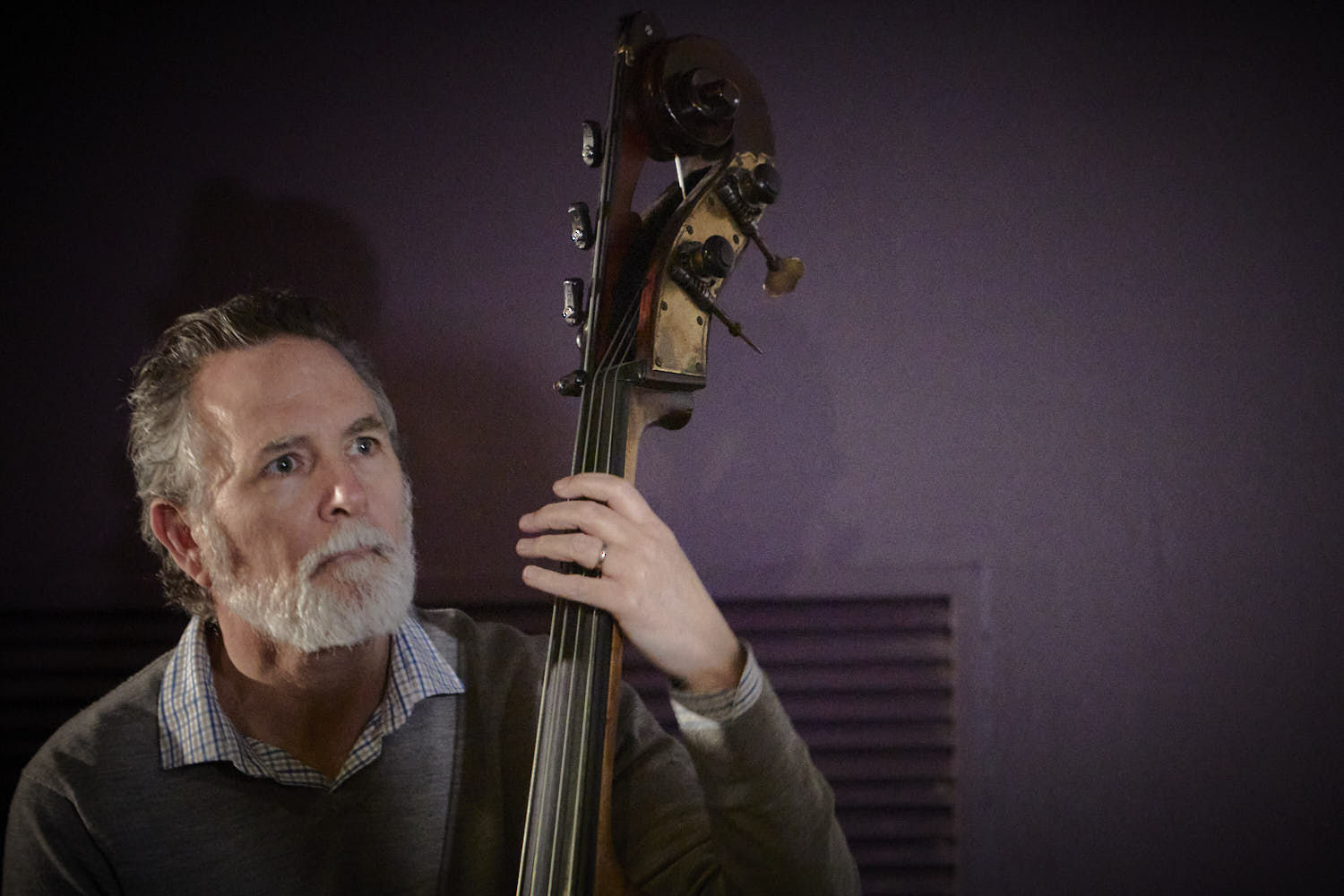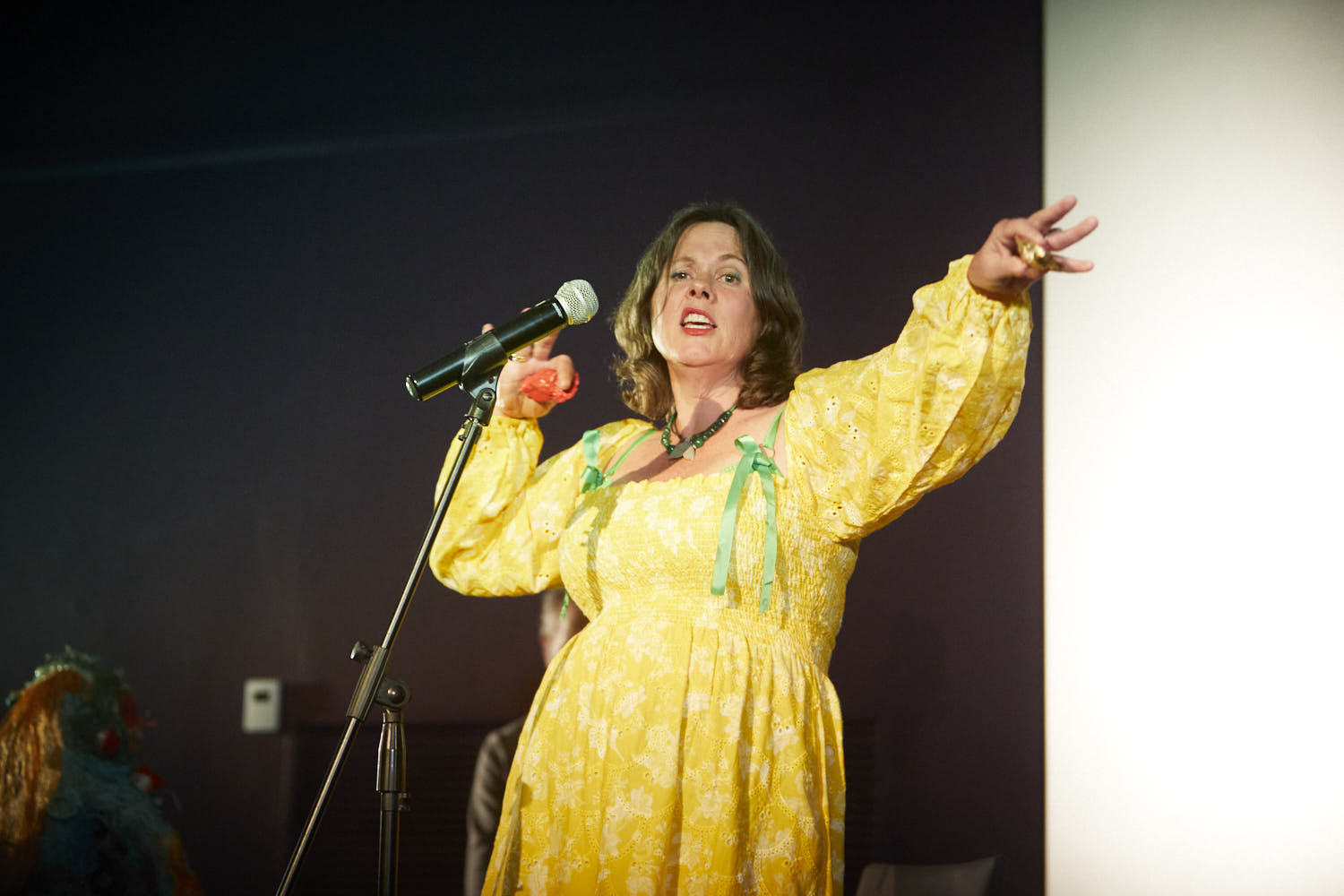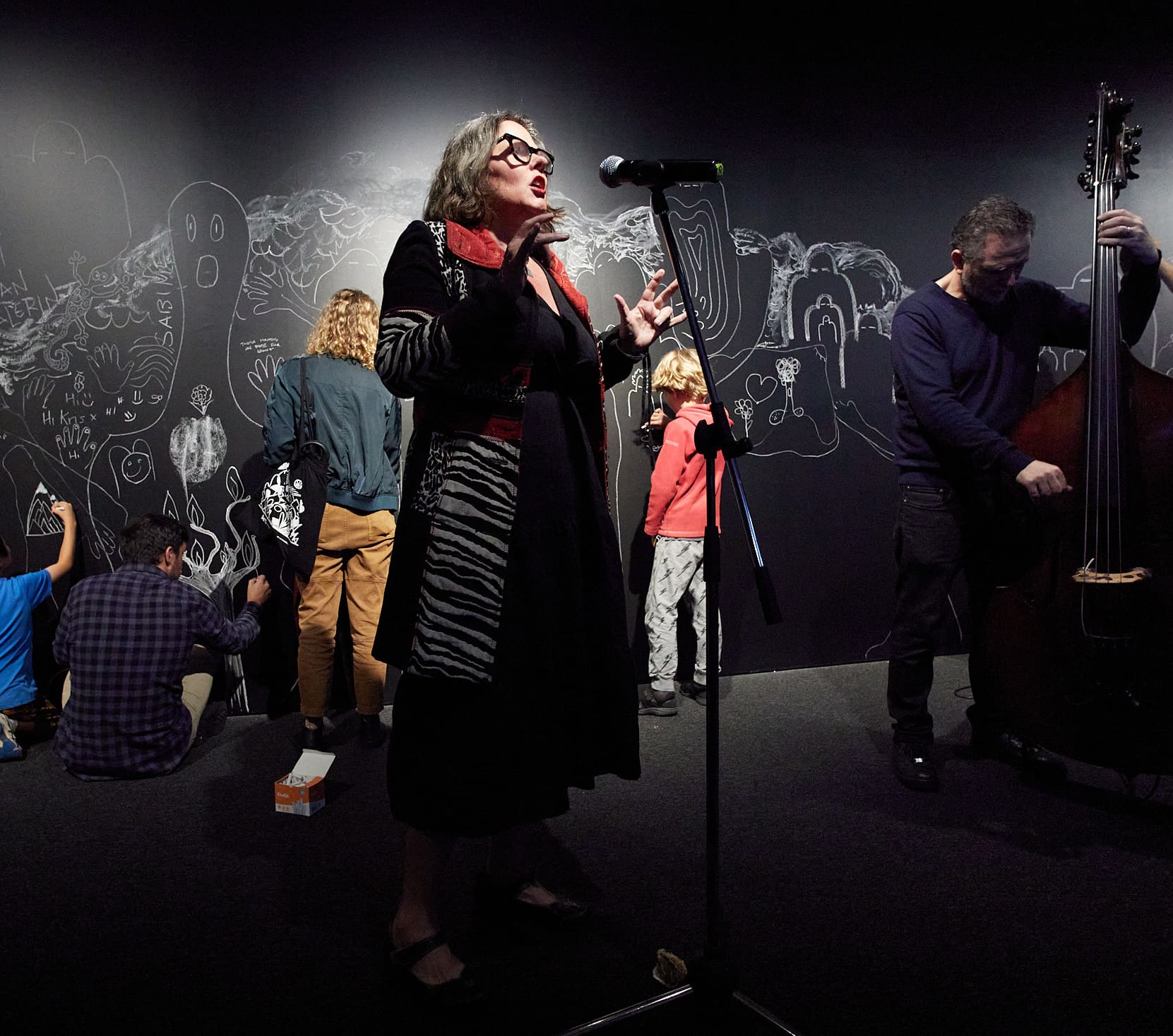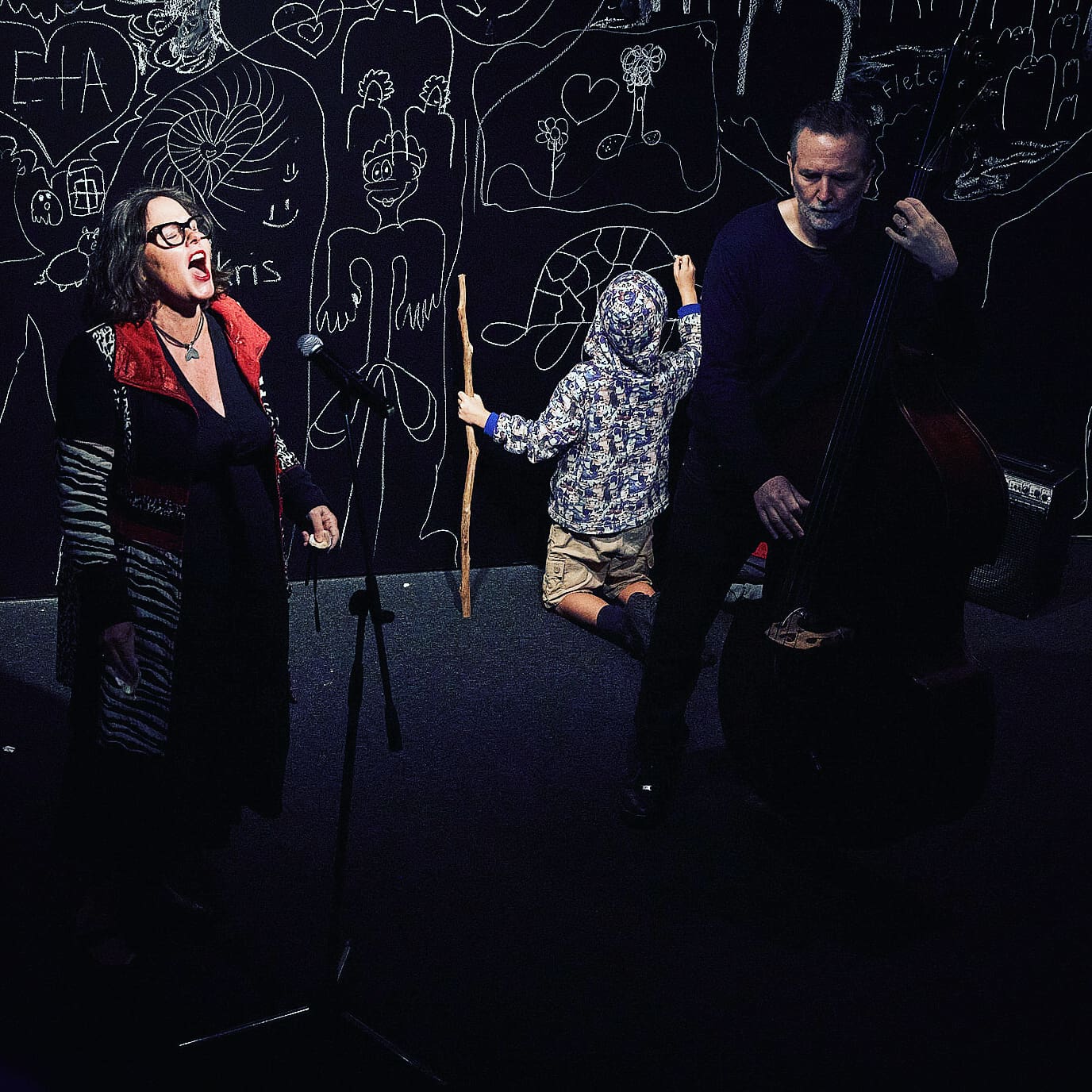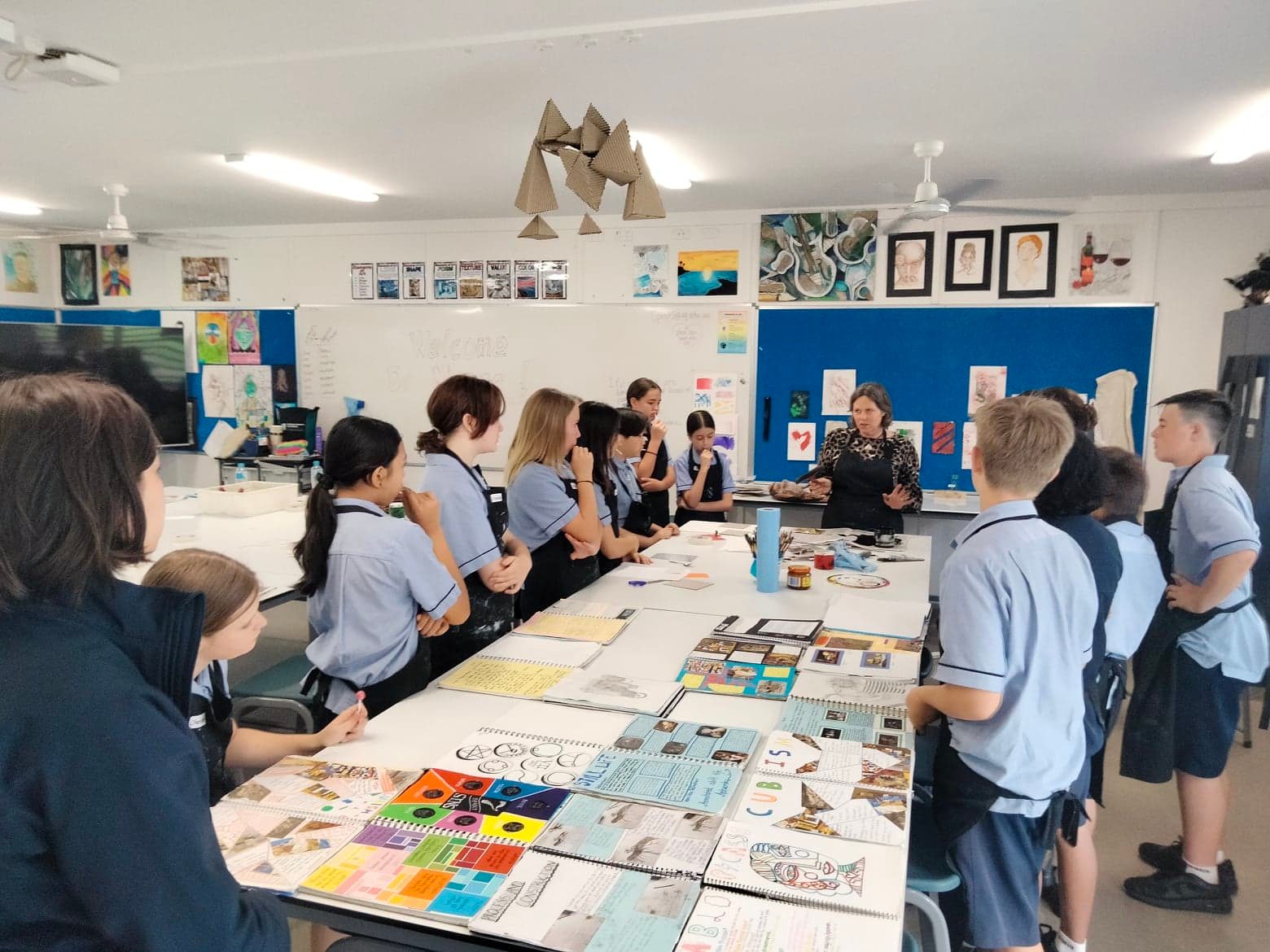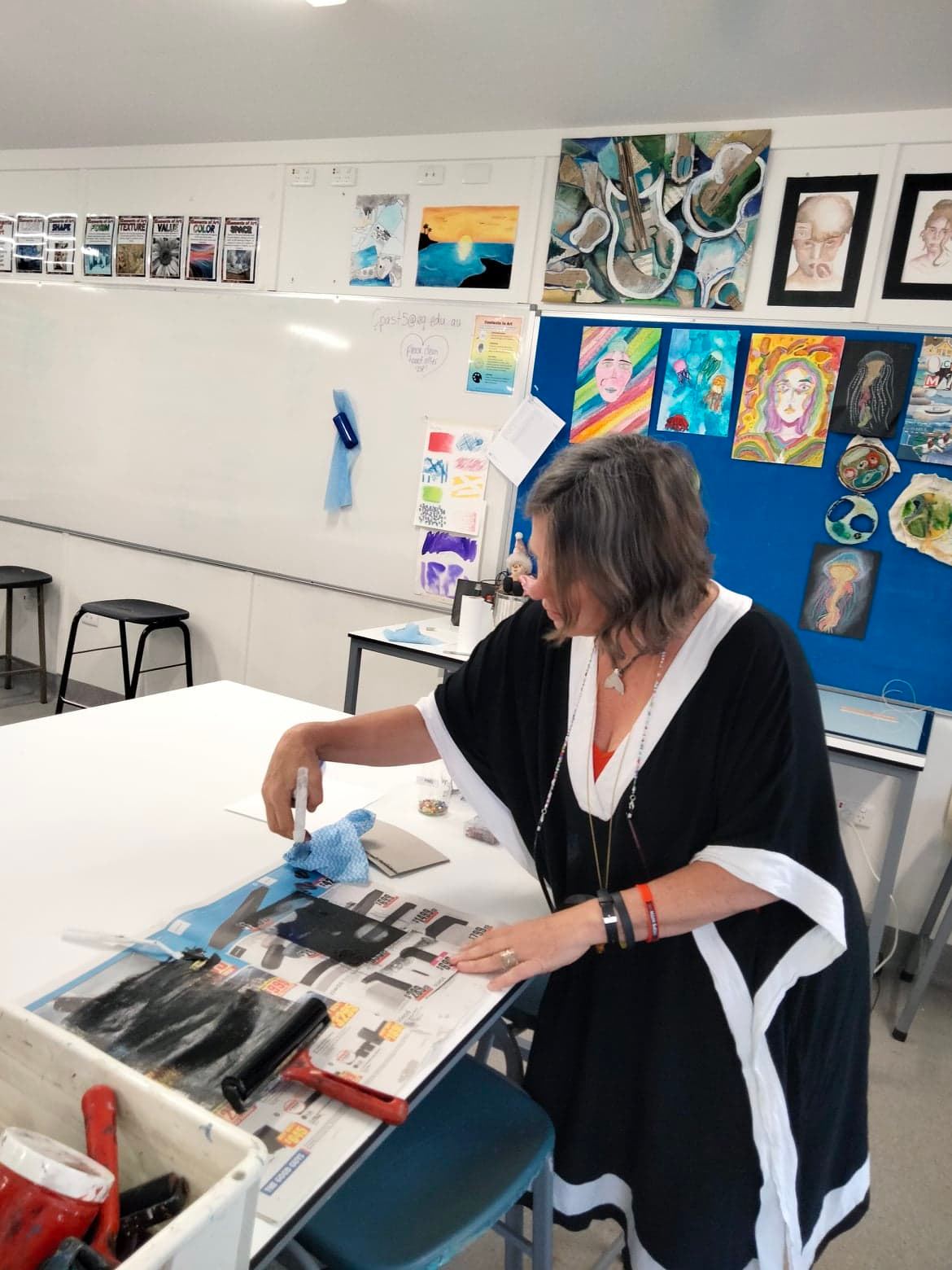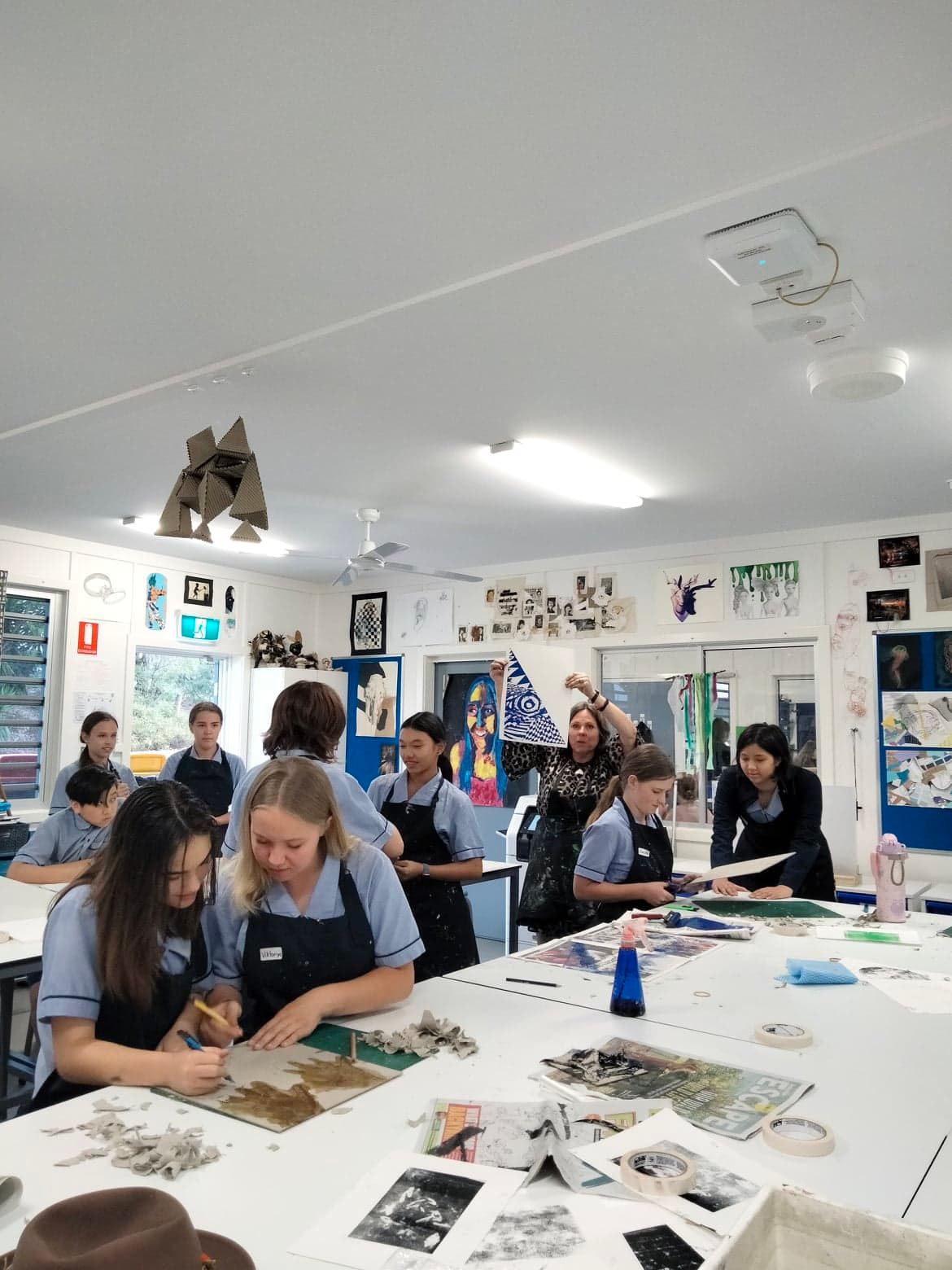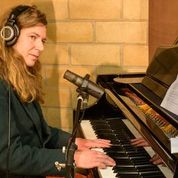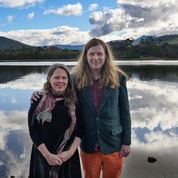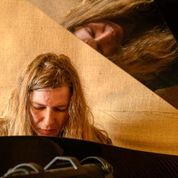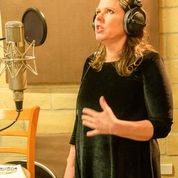Can you talk about your connections to ANAT?
In 2018, I was working as a project officer with senior lecturer in the School of Biotechnology and Biomolecular Sciences and Associate Dean Education, innovation and student experience for the Faculty of Science at UNSW, Rebecca LeBard. Keen to support my creative trajectory as an artist, Rebecca introduced me to the innovative research being conducted by oyster expert Dr Laura Parker, the Indigenous scientist whose research focuses on the impacts of climate change on molluscs. I was hooked! Inspired and excited by the notion that artists and scientists could work together as research partners in laboratories, research facilities and beyond, I successfully applied for a Synapse Residency to work with Laura. Hosted by the school of Biological, Earth and Environmental Sciences (BEES) at UNSW, I set up an artist’s studio in a laboratory and began reading and learning about ocean acidification, climate change adaptation, reef rehabilitation and marine organisms. My friendship with Laura and my This residency has led to compositions, recording opportunities, publications, performances, exhibitions, participatory reef building projects, and a passion/obsession with oystery worlds!
The oysters lie in my studio, waiting for stories.
I fill them up; fill them to brimming with questions; with searching, with encounter.
I talk to them.
In whispers.
I talk them.
About them.
Through them.
With them.
I dream them.
Piled in front of me like glistening Sea Country at times they overwhelm.
Overwhelm me with their volume, their abundance, their noise,
Their need.
I think through them.
With them.
They form in piles on blankets.
I contemplate the inside for I am pearl, I am smooth, I am skin.
Flesh.
I trace the outside with my fingers, my thumbs.
I line them up.
Stack them.
I count them and find ways to connect them, to reconnect them to each other, to themselves and to me.
I try to make them whole.
I wash them; over and over. I turn them.
I turn.
I wash.
I am oyster, I am skin. I am shell; torn and wet.
My hands rub barnacles. I am clinging. Clinging on.
I know where oysters lie.
They lie inside and nourish me, and I filter them.
They fill me with song.
Miss-heard.
Misunderstood.
Missed.
Oysters.
Oyster girl.
Oyster song.
Oyster skin.
I know where oysters lie.
Everybody’s a storyteller. What stories are you telling through your work?
I am currently telling the story of Worewoterpeender through my Precious River song. https://soundcloud.com/user-278409759 The song evokes a northern river recently named in my home place lutruwita Trowunna Tasmania. The Aboriginal and Dual Naming Policy and process provides for the naming of areas that have significance to Tasmania’s Aboriginal histories and provides for the preferential assignment of Aboriginal names for previously unnamed natural features or places – such as rivers and mountains – as well as allowing for the addition of Aboriginal names to existing official names of natural features or places. Unlike most other place names recorded through dual naming, this precious water way was, until recently not mapped, nor named and so sits outside dual naming/faming. My precious river song emerges from my memories of visiting the little river and listening to its sounds. It remembers and maps the river’s journey through time, space and place. I recorded the track with Paul Davison on guitar and Michael Galeazzi on double bass. The track was mixed by sound engineer Michael Barry and the song was developed through generous support from the Waverley Artist in Residency program at the Bondi Pavilion Music Studios. Michael Galeazzi and I performed my Precious River song live recently at the Powerhouse Museum as part of Elemental Landscapes event where audience members listened to us perform and responded with live chalked drawings that were erased at the end of the Powerhouse Late event. We performed the song and story most recently at the Australian National Maritime Museum in Sydney as part of Blue World’s Valerie Taylor Ocean Prize – Life Beneath the Waves which was a wonderful opportunity to connect, perform and bring the song and its presence to life.
How has your practice changed over time?
At 17, I left Tasmania to study at the University of Wollongong within the School of Creative Arts. This training developed my skillset as an artist and established my confidence and competence as a creative practitioner. I studied painting, drawing, creative writing, singing, acting, musical theatre, performance skills, printmaking and sculpture. I still draw on the skills that I developed during these formative years and maintain a drawing, painting, writing and journaling. These creative modalities assist me to map my ideas, track my thinking, conceptualise projects and practise self-care. Whilst my creative arts training in Wollongong equipped me with creative skill sets in visual arts, performance and music, motherhood has been the single most impactful experience that has shaped my practise. Indeed, pregnancy, birth, breastfeeding and caring for my children has nourished my inner life and defined my identity and concept/power as creator/creative. My work life has been a mosaic of consultancies, contracts and creative projects. At 27, I was raising my first child and performing, singing and developing community cultural development and youth arts projects. At 37, I was living in a caravan with my two children on Jawoyn Country near the Katherine River, developing my writing and research skills. At 47, I graduated with my PhD, welcomed my third child and began developing mixed media, collage works and small sculptures. In my 50’s I have returned to writing music and developing my singing, poetry and performance skills. Access to a long-term studio/lab at UNSW over the past five years has offered me space to create social practise, initiate workshops, develop presentations, enact performances and create exhibitions. The laboratory space has also placed me into contact with climate change experts, ecologists and researchers and has inspired me to delve deeper into my dialogues with land, place, unity and connectedness.
What are you working on at the moment?
Performing my songs to climate change scientists and researchers in the Royal National Park last year was inspiring and has motivated me to write more songs and stories. I am currently developing mountain, river and ocean songs and stories and have been rehearsing & recording with Paul Davison (guitar) Michael Galeazzi (double bass) Oliver Gathercole (piano/keyboard) and Richard Starr (musical director). I am developing a children’s book with Tasmanian small mammal expert and ecologist Billie Lazenby and Victorian artist, animator and designer Sarah Fennelly. The book is set on Flinders Island and shines a light on the pookila, or New Holland Mouse. The book explores the importance of celebrating the plants, animals, and life that walks and dwells in the wildest of places. I am enjoying the small-scale self-publication journey and really value the opportunity to create a children’s book that is science informed, climate friendly and demonstrates the importance of telling local, place-based stories. The book emerged from a story sharing visit to the Flinders Island District School where I had the opportunity to meet and mentor young writers. I am also working on a commissioned book chapter for Professor Jayne Osgood, (Middlesex University London) for her upcoming book Post development Approaches to Childhood Play (Bloomsbury) and thinking about the ways in which star stories shape our thinking. The chapter tells of the importance of looking to the stars for solutions and offers them up as teaching and thinking tools for deep learning, play and encounter.
working
worlding
wondering
I lie down; look up in, on and through
With pasts
Presents
I walk
I play.
Birth.
River.
For I am future and sing stars.
What advice would you give to your younger self?
You are enough.
River Business and the Powerful, Living Stories of Young Writers in Regional Tasmania
Dr Sarah Jane Moore is the author of the children’s book River Business which was written during the global pandemic. The book was written for families and young children and is imaginative and nature based. Conceptualised in response to the climate emergencies, River Business honours the life force embodied by the river and emphasises the importance of listening, caring and connecting to our water ways as symbols of peace and healing. Moore is a passionate advocate for the arts and believes that the diverse formats made possible through inter-arts projects in schools offer students agency, possibility and potential. lutruwita / trowunna Tasmania is a place of great natural beauty and Tasmanian wildlife, landscapes and connections inspired all elements of the book. The narratives articulated within the book are deeply immersed in the pedagogy of place, the possibilities of friendship and the healing nature of worlding, wilding and wondering.
In 2023, Sarah Jane was approached by PETAA (The Primary English Teaching Association Australia), a national not-for profit industry body supporting primary educators, to develop and deliver a creative literacy program. PETAA’s intention for the Young Writers Program was that Dr Moore developed a school program that ‘motivated and inspired students to be passionate about writing by giving them the opportunity to work with a real published author’. Dr Moore approached Flinders Island District High School Principal Joshua Moore about the possibility of the school hosting her during Harmony Week in March 2023 and the project was seeded. Joshua was supportive from the outset and stated in their first conversation together; ‘The students at the school have so many advantages and opportunities that living on Flinders Island provides and it would be fantastic to have you come and hear those stories, meet the students and help them develop their story telling and writing.’
Joshua placed Sarah Jane in contact with AST Nicole Jones who took carriage of supporting the project. Nicole and Sarah Jane had several discussions by phone and email. Their aim together was to develop the two days of face-to-face workshops that encouraged students to write, connect and share their ideas in a positive and supportive learning environment. Nicole, an experienced lead teacher suggested that the best approach would be for students to opt in to writing sessions and to focus on grade 3/4 and 5/6 small group cohorts. Nicole spoke to students and teachers about the workshop personally by visiting each classroom and talking about the project. By working in this way Nicole recruited 34 students to work on the Young Writers Program. Students asked Nicole if they could participate in illustration sessions and in response to this student interest, Sarah Jane developed a program of writing, storying and image making workshops. On the first day of the project, Sarah Jane read her book River Business and shared her experiences of writing poetry, songs, children’s books and short stories. She introduced a number of writing and image making exercises to the groups including writing in the school garden, playing vocabulary drama word games, timed theme writing tasks and writing collaboratively.
The Young Writers Living Stories project demonstrated how Moore used her creative pedagogies to extend the students’ writing education beyond the classroom and introduced writing and drawing for pleasure. Moore’s unique living story model delivered a program that modelled writing for success. The children of Flinders Island brought their stories to life and provided a scaffold for them to re(imagine) re(connect) re(new) and re(envisage) writing as a purposeful and optimistic, useful space for connection, engagement and sharing.
Sarah Jane Moore and Linda Knight
Relation: Colonial Ecologies and Counter Mapping
11 – 15 April
Opening Night: Thursday 13 April, 6 – 8pm
Workshops delivered by Sarah Jane Moore: Daily, 10 – 11am Register here
Sarah Jane and Linda first met in 2016 and this exhibition interrogates the visual art tracings that transpire through sharing writing, thinking, mothering, gathering, walking, talking and feminising. ‘Relation: Colonial Ecologies and Counter Mapping’ inspires climate conversations, it maps counter narratives and it explores the possibilities of precious rivers, sacred urban spaces and safe, unnamed places.
Sarah Jane presents six works on canvas board. The visual art works are framed in Tasmanian oak and evoke lost worlds, ecologies of memory, and moments in time. The scarred tree remembers the bush fire, the Black Swan a time when rivers where black with kin, the River Gum stands tall, the lake deep. The Tasmanian Waratah distils a dance and provides the circle of family connection whilst the moon bird flies too close to the sun. Sarah Jane’s art explores the materiality of living in lutruwita Trowunna Tasmania where she created the works which are made with ground oyster shells, river clay, she-oak charcoal, tree sap, sand, mutton bird oils, gold leaf and acrylic paints.
Linda Knight’s works provide a voice for future generations. She is curious about how climate change enacts political, environmental, technological, and social shifts and how this affects urban lives and spaces. This project speculatively imagines future cities and the strange, chimeric, bio-speculative urban citizens that populate cities now and in the future. She explores how humans, insects, weather, animals, refuse, and bio matters are contemporary urban citizens that will morph into the dominant urban citizens of the future. Using concepts of posthumanism, new materialism and feminist theories of matter, Linda’s troubles the hierarchies and privileges that underpin urban design and the precarious, monstrous future cities that are emerging all around us.
Sarah Jane Moore
Sarah Jane Moore is an independent creative artist, author, musician and performer whose work maps, shares and stories river, mountain and ocean ecologies. Her creative output spans mixed media collage, painting, printmaking, song writing, poetry, performance and creative writing. With over 30 years of teaching and creative project experience in the Northern Territory, NSW, Queensland, Guam, Fiji, Samoa, New Zealand and lutruwita / Trowunna Tasmania, Sarah Jane enjoys presenting her practise in non- traditional venues such as laboratories, libraries and community centres. Whilst her PhD research focussed on song writing and visual arts methodologies as tools for healing, Sarah Jane’s most recent visual art work has been inspired by working with scientists. Her practise is place based, science informed and climate focussed.
Sarah Jane developed the work for Relation; Colonial Ecologies & Counter Mapping during the pandemic from her home-based studio in Taroona, lutruwita Trowunna Tasmania. Deeply influenced by the materiality of working in and with place, this collection uses charcoal, river clay, tree sap, ground oyster shells, sand and shells to map moments and distil time.
Michael Galeazzi and I were honoured to perform my ocean, river and mountain songs at the Australian National Maritime Museum in Sydney in August 2023. My creative work was selected to be profiled as part of Blue World’s Valerie Taylor Ocean Prize – Life Beneath the Waves. The evening provided a wonderful opportunity to connect, perform and bring my music to life. Gratitude and kudos to Blue World for shining a light on the importance of art meets science approaches to navigating climate change.
Recently, newly appointed WWBA project officer Amy Kasuma invited Dr Sarah Jane Moore a series of questions which inspired her to reflect on the past few years and the impact of the Womens Well Being Academy on her life/work and creative process
What was the impact of the funding from WWBA?
https://www.edi.unsw.edu.au/get-involved/womens-wellbeing-academy
Receiving the funding was a confidence booster and enabled me to travel to the mainland and meet with my research partner Laura Parker, colleague Brendan Burns, curator Mr Jackson Mann and digital collaborator Anton Rehrl https://www.antonrehrl.com/ The funding was a game changer for my creative practice as it re-connected me with my support systems and enabled me to take a break from sole parent duties and focus on delivering, interacting and reflecting on my digital exhibition at the library. The funded outreach session that I gave to International postgraduate students was both nourishing and impactful to my future practise as I enjoy presenting and performing and often regard myself as an interdisciplinary, intersectional place based performance artist. The stories and ideas that the students shared with me whilst engaging within the exhibition space on campus have been embedded and woven into the monologues of my next live theatre show Behold, Belong, Become. This live theatre story song cycle will be performed with Tasmanian musician Oliver Gathercole in 2023 in Europe on invitation from Middlesex University and Professor Jayne Osgood. School of Biotech Biomolecular Science ally, colleague and supporter Associate Professor Brendan Burns purchased one of the 6 visual art pieces from the Worlding with Oysters collection during the visit and that had great impact. It is a piece framed in Tasmanian oak by a local Taroona based independent framer and entitled Magic Moon. I am very proud of the fact that Brendan hangs the work that we developed in real time together, in his office at UNSW. Its materiality was informed by a dialogue and conversation with Brendan, Professor Martin Van Krandonk and others during a live feed from my little house in Taroona. The blood moon speaks directly to the cycles of nature, climate change and is held in the private collection of Dr Brendan Burns and I am very proud of this acquisition and of my friendship and working relationship with Brendan.
Covid has impacted both artists and scientists in a myriad of ways, how did covid impact your life/research/work?
I relocated to lutruwita Trowunna Tasmania to care for my young children during covid. I lived on a low income, home schooled my children and renovated an old weatherboard house in Taroona (meaning shell) overlooking timtimili minanya / River Derwent. I spent my 50th birthday stacking wood and burning a brownie made from the last packet mix on the shelf at my local supermarket. It was a difficult time when artists, musicians and freelance independent creatives such as myself were cast adrift from our incomes and usual means of disseminating our work. Covid required me to develop different ways of working through and with digital art practise and I believe that my work has strengthened through this time. Whilst living remote, I transformed a garden shed into a studio and made charcoal from local bushwoods, harvested clay and ground the oyster shells that Laura Parker sent me through care packages in the mail. I needed to be resourceful during this time and made all my own pigments from materials harvested within a 5 km radius of my home. I explored place and place scapes in new ways and developed fresh focus, and a new vocabulary. Curator Jackson Mann and mentor Ivan Jirasek checked in on me and my work regularly with mobile phones calls and digital meet ups and I began to acknowledge the loneliness, embrace the isolation and engage in in newly iterated hybrid digital/hand on performance art making and workshops https://www.edi.unsw.edu.au/dr-sarah-jane-moore-diversity
What have you been working on since WWBA funded you to travel from lutruwita Trowunna Tasmania during NAIDOC Week 2020? http://exhibitions.library.unsw.edu.au/worlding-with-oysters
I secured a teaching contract in Art, Architecture and Design for T3 this year and moved to Bondi in order to focus on my teaching. For the past ten weeks, I have been encouraged students to connect to place through walking, weaving, listening and storying/sharing. I have been mindfully cultivating a nature based and external classroom, where face to face learning and hands on approaches to materiality are modelled. I have been encouraging students to write poetry, develop collage, explore galleries, the Botanical Gardens, draw, paint and explore the gardens on the Paddington Campus and the outdoor learning spaces on the Kensington Campus too. The students have visited and added their creative voices to the wall in BEES https://www.scienceweek.net.au/event/through-the-looking-glass-with-dr-sarah-jane-moore/randwick/and they have printed protest bags and staged a pop up exhibition in response to the work of Gordon Hookey. https://www.events.unsw.edu.au/event/gordon-hookey-murrialityIt has been a busy time of learning new systems, navigating change and meeting and engaging with students and developing student centred, hands on and practical, collective, campus based pedagogical approaches.
The CSIRO recently funded you to share your work at the Ryde Library; tell me about this performance
https://www.scienceweek.net.au/event/art-walking-into-science-8/ryde/
I gifted the last ten copies of the 1000 copies of River Business that I had printed children’s to children during Science Week at the Library in Ryde in August. This song/story sharing presentation enabled me to in honour scientists and celebrate scientists and focus my lens on the liminal spaces and the nexus where science meets art in unexpected ways. Luke Stellar joined me at the library and shared his insights and science stories and colleague Steven Durbach showcased his own work. Working with CSIRO in this way was an important part of my professional growth and development and represented levels of professionalism that would have been impossible for me to imagine six years ago when I graduated with my PhD and gave birth to my third child. The shift in my thinking and practise occurred when I met Indigenous Scientia Fellow Dr Laura Parker and learnt about her ground breaking work with oysters. After meeting Laura, I was a funded artist in residence in BEES through the prestigious Synapse art residency program. Funded through the ANAT network, Synapse enabled me to focus, take time to develop work without restrictive outcomes based parameters and experiment, be curious and learn from scientists. ANAT continue to support my work through hosting my blog and I thank the network for their advocacy, support and encouragement over the years. This support plays a vital role in my cut through with industry partners in science and supports my professional networks. I love the work that they are involved in and the networks who work/play and explore in the spaces between art, technology fascinate and inspire me. https://www.anat.org.au/program/anat-residencies/
https://www.scienceweek.net.au/event/through-the-looking-glass-with-dr-sarah-jane-moore/randwick/
Tell me about your latest residency at the Bondi Pavilion.
This year, I was successful in submitting an expression of interest to be one of the 7 selected artists and collectives to work in residence at the Bondi Pavilion. https://www.waverley.nsw.gov.au/recreation/arts_and_culture/bondi_pavilion_housewarming_program. Over the past three months I have written, recorded and directed a one person show entitled Behold, Belong, Become. The show navigates my oyster, river and ocean journeys and stories the last three years of living and working in remote area lutruwita Trowunna Tasmania through song, monologue and music. I am grateful for the support of the cultural team at the Bondi Pavilion for enabling me to work in the new theatre, the recording studios and the Sea Gull Room. Taking time out in a residency such as this gave me the opportunity to ground myself, pause my research and teaching and focus on the development of new, post covid work for live audiences. I look forward to opportunities to perform this work in the future.
What is next for you Sarah Jane?
As an independent creative artist who works from contract to contract, I often ask myself this question! Mostly, the answer unfolds, like a meandering track or river; directed but responsive, organic and in flow. In general, I plan to continue to ride the funding wave in order to develop my creative practise and I want to spend time with my three children and be present in their lives as they grow. I am constantly learning new languages and ways of seeing/being and working and enjoy the laboratory studio that BEES so generously provide to me on level 5. Article 13 of the United Nations Declaration on the Rights of Indigenous Peoples states that Indigenous peoples have the right to revitalize, use, develop and transmit to future generations their languages, oral traditions, writing systems and literatures and I hope to continue to support others in this space in the future. In the meantime, I will work collaboratively with climate change and marine scientists and devote my time championing the importance of place, nature based learning and wild thinking. To commission a work, book a workshop or create a connection with Dr Sarah Jane Moore, please reach out on [email protected]
In October 2022, I was lucky enough to be an artist in residence at South Port State High School. On behalf of the Art Department, led by Mr Luke Lilly, colleague and friend Ms Claudia Pasten invited me to conceptualise a day of learning for the students. Claudia and I planned an incursion artist in residence workshop for the 16 year 7 students.
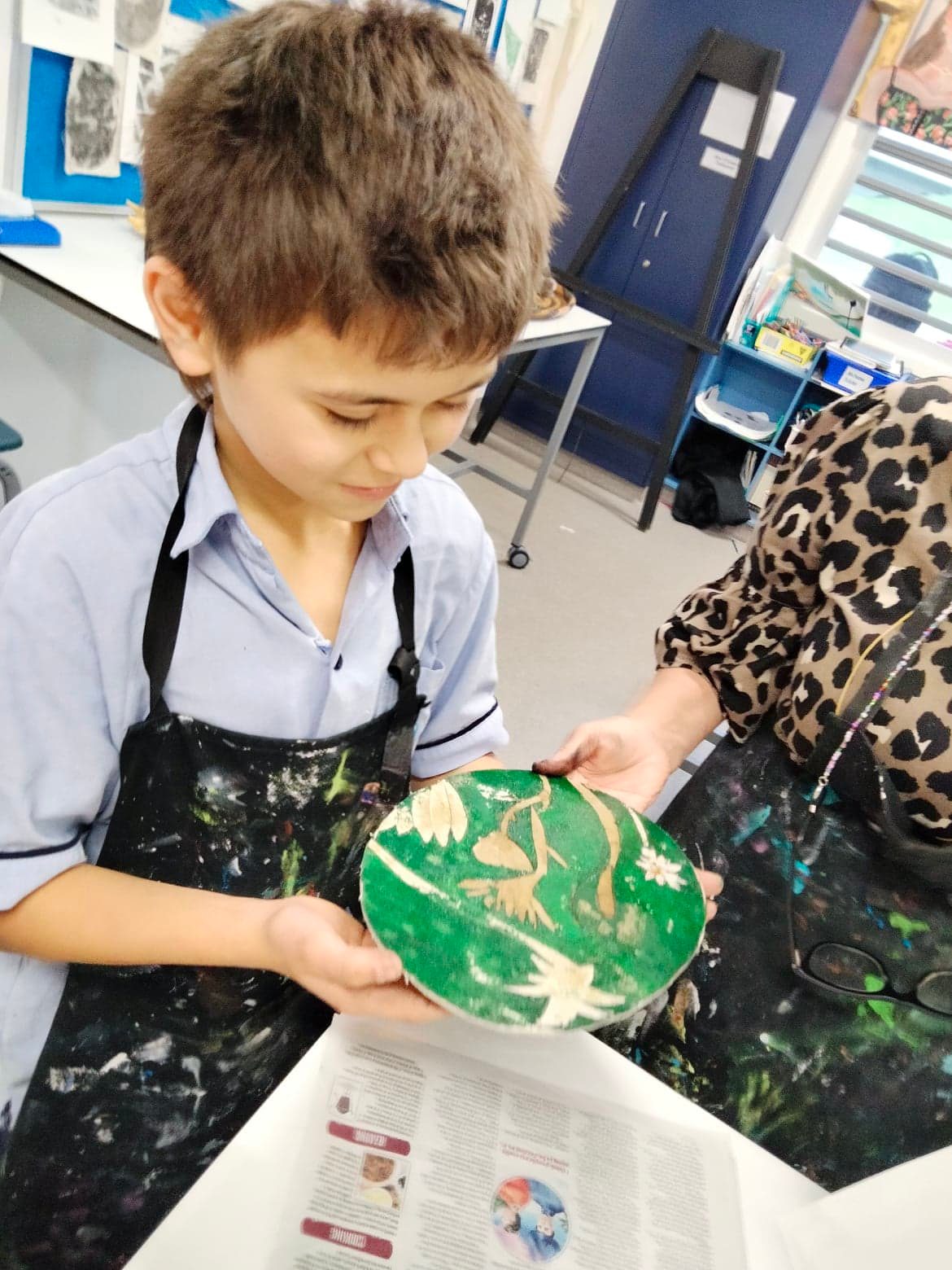
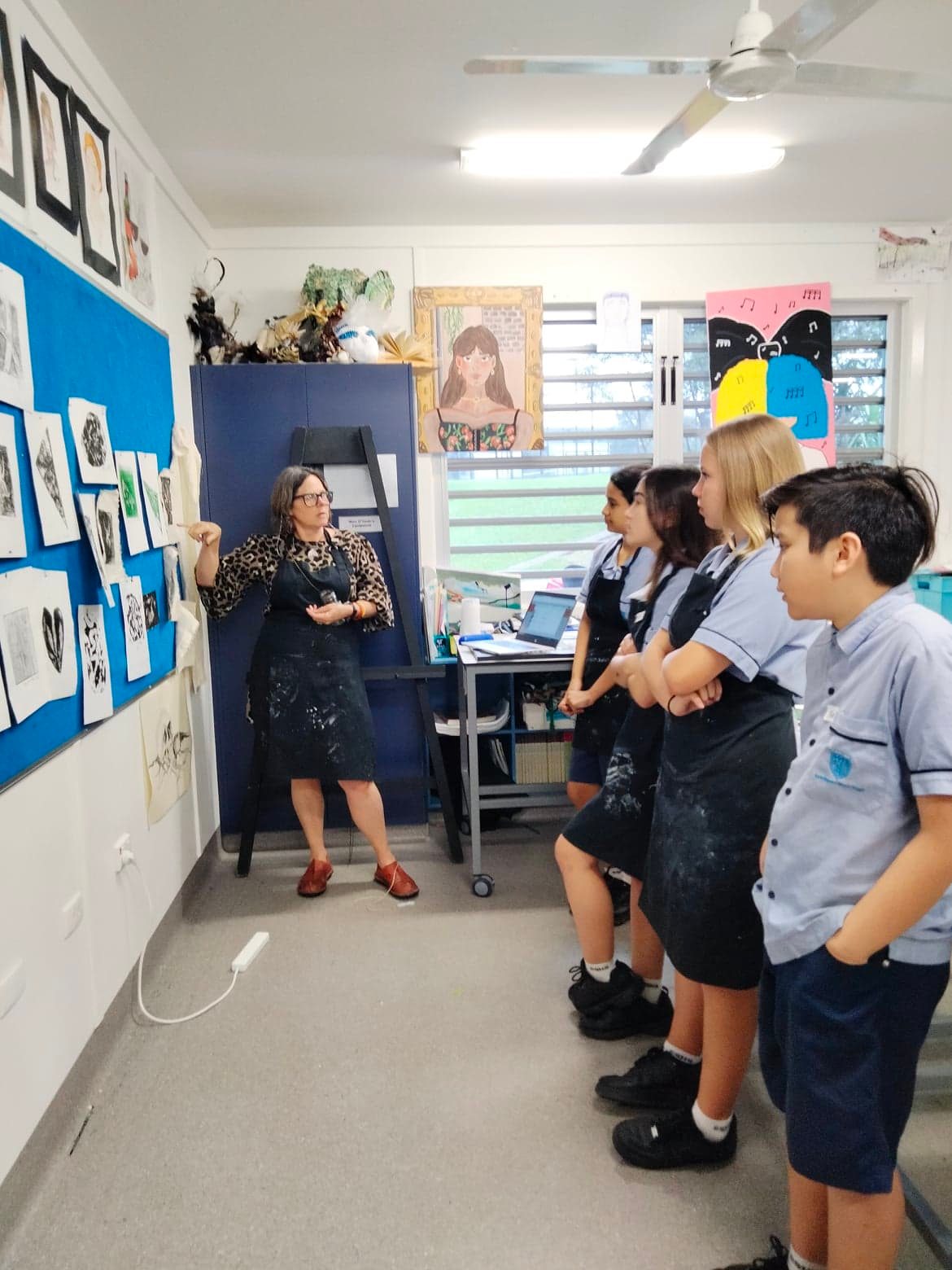
The day of learning was supported Jason Hassard, the Junior School Principal who visited the classroom during the workshop and said; ‘how wonderful it was for the students at South Port High School to have a professional artist of such high calibre visit the school.’
Ms Pasten supported the students by having them released from their regular year 7 timetable to focus on their visual arts skills and to explore the medium of print making with Dr Moore.
The dedicated Visual Arts teacher said of the residency; ‘The theme for the term was Deadly Sins and the students have been working hard all term on their visual arts diaries. I reached out to Dr Sarah Jane Moore and organised the residency in order to for the students to learn from a professional artist. I wanted the students to remember the experience for the rest of their lives. This turned into an enriching experience and fun filled day for all involved’.

Talented visual arts student Natasha Pasten-Bennett said in an interview after the residency ‘I learnt how to print make. I loved learning the etching process on clear acetate. It was fun.’
I am so proud of the year 7 Art Excellence students at South Port High School; their ideas were amazing and the collographs and etchings that they created during the workshop were outstanding.
I look forward to seeing the Through the Looking Glass perspex installation project that we began during the workshop come to fruition as the term progresses.
I would to thank Sean Bennett for constructing the Through the Looking Glass perspex and timber installation art work for the students to print on.
Gratitude and kudos Deputy Principal Junior/Secondary Katrina Bayldon and Dean of Students year 7 for supporting the project.
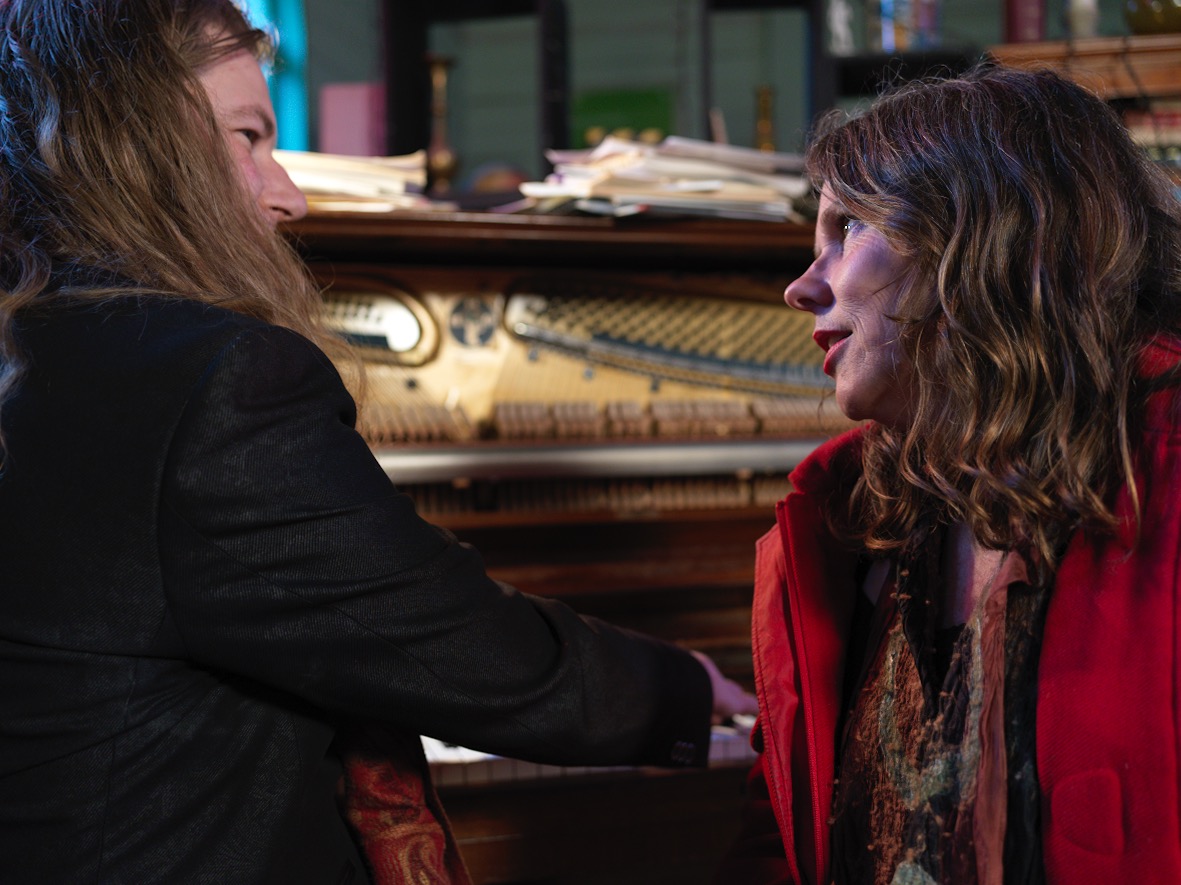
https://www.edi.unsw.edu.au/get-involved/diversity-fest/diversity-fest-2022
Tasmanian based musician Oliver Gathercole and Sarah Jane Moore are happy to be performing together again.
Performer, teacher and professional musician Oliver Gathercole will travel from his home based studio in nipaluna / Hobart to Bondi to rehearse at the Bondi Pavilion in the music studios. Sarah Jane and Oliver were introduced through a musician and mutual colleague and Oliver has taught both of SJ’s young children to play the piano and been a regular part of SJ’s Tasmanian life for many years. Oliver and SJ have performed Sarah Jane’s original music in island based galleries and at festivals and events. SJ has sung in one of the choirs that Gathercole leads and respects Oliver’s work as a teacher, musician and friend. Their work together has been funded by the Hobart City Council through small grant funding opportunities for music outreach for families during covid and they have enjoyed a creative partnership through performing in schools and large student choirs. In 2019, Sarah Jane was successful in applying for a grant from the Australia Council to fund the recording of the song Wybalenna for which Sarah Jane wrote for Gathercole to play on piano. They both visited Flinders Island to enable this song to unfold.
This time, in the Royal National Park, Oliver Gathercole will play Moore’s mother’s wooden alto recorder which was handed down to her after her mother’s death in the 1980s. The reinterpretation of Moore’s music in new time/space will conjure up different stories and possibilities and all members of the audience/walkers will have opportunity to lead discussions or share stories about their connections to place.
Sarah Jane is hoping to have climate change scientists and allies join the crew on Sunday and their unique perspectives and expertise as research scientists and field workers in science will be welcomed into the storying and place making of this unique event. Sarah Jane is grateful to Professor Poore and the staff and students within Biological Earth and Environmental Science for supporting the studio in which Moore creates her worlds and honours the scientists who have crossed her path to enlighten, inspire and assist her art meets science approaches along the way. Gratitude too, to ANAT for their continued support of Moore’s practice and committment to supporting Moore’s creative practice as a former Synapse artist.
The event has been supported through studio time provided by the Waverley Council’s Artistic Residency Program and Moore and Gathercole thank the Pavilion staff for enabling them to rehearse at the iconic venue. Two years ago they worked with 2020 UNSW EDI Festival Director Fergus Grealy on a musical and story sharing event that was planned to be delivered through face to face live theatre performance on site at UNSW but was pivoted online owing to covid related travel restrictions. This time the dynamic musicians will be sharing time, songs and stories as part of the UNSW Equity, Diversity and Inclusion Festival on Sunday October 30. Oliver and Sarah Jane enjoyed working with Fergus and the EDI Festival so much that we vowed to each other that we would like to support the festival again with our creative partnership and unique style of place based Tasmanian music and are delighted to have been selected to present as part of the impressive EDI Festival line up in 2022.
Join them in the Royal National Park for this unique event. Meet them at Waterfall Station in the car park at 1 pm on Sunday October 30 and we will walk together and story, talk and listen to the bush and to each other.
This event is an inclusive and family friendly event.
BYO walking shoes, water bottles, snacks and sunscreen. Listening and sharing are important elements of this musical experience.
Register through this link; Oliver and I look forward to meeting, talking with and walking with you this Sunday.
https://www.edi.unsw.edu.au/get-involved/diversity-fest/diversity-fest-2022
